Have you ever wondered about brown birds with red heads? What makes these birds so interesting? In this easy-to-read guide, we will explore the world of small brown birds with red heads and discover what makes them special. Birds like the red crossbill and the northern cardinal are amazing examples of how birds can adapt to their surroundings.
From their bright red heads to their interesting behaviors and favorite habitats, these birds are truly fascinating. Whether you love birdwatching or are just curious about birds, join us as we learn more about the wonderful world of brown birds with red heads.
9 Brown Birds With Red Heads
Birdwatching is a delightful hobby that brings us closer to the wonders of nature. Among the myriad of bird species, some brown birds with striking red heads capture the eye with their unique beauty. This detailed guide will explore nine such birds, delving into their physical characteristics, habitats, behaviors, and other interesting facts. These birds, found in various parts of the world, offer a glimpse into the diversity of avian life.
Related reading: 15 Yellow Birds in Colorado: ID Guide with Pictures
1. House Finch (Haemorhous mexicanus)
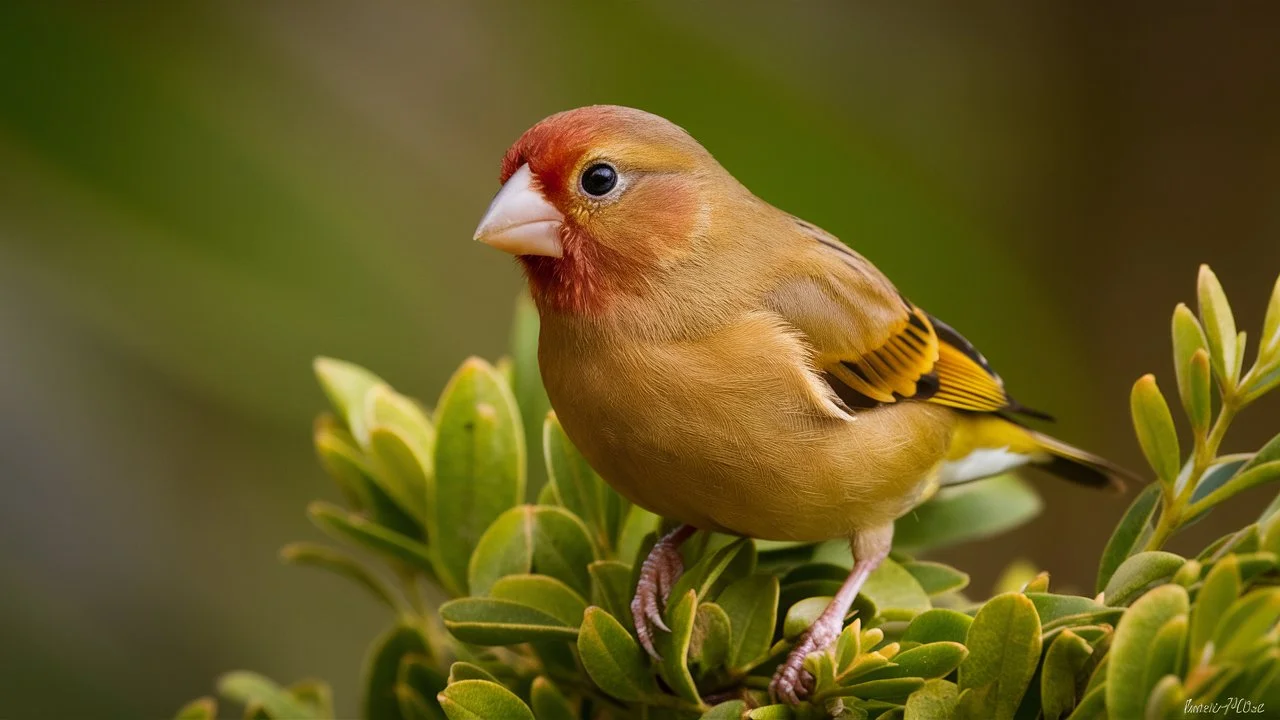
The House Finch is a small bird, measuring about 5-6 inches in length. Males have a bright red head, throat, and chest, which contrast beautifully with their brown-streaked bodies. Females are less colorful, primarily brown and streaked.
Habitat: House Finches are highly adaptable and can be found in urban areas, suburbs, and rural regions. They are native to the western United States and Mexico but have been introduced to the eastern United States.
Behavior: These birds are social and often seen in flocks. They are known for their cheerful, warbling song. House Finches feed on seeds, fruits, and insects. They are frequent visitors to backyard feeders.
Breeding: House Finches typically build their nests in trees, bushes, or on man-made structures. The female lays 3-6 eggs, which she incubates for about two weeks.
Interesting Facts: The red coloration in males is due to the pigments in their diet. A well-fed male with a diet rich in carotenoids will be brighter, which can affect his attractiveness to females.
2.Red-headed Woodpecker (Melanerpes erythrocephalus)
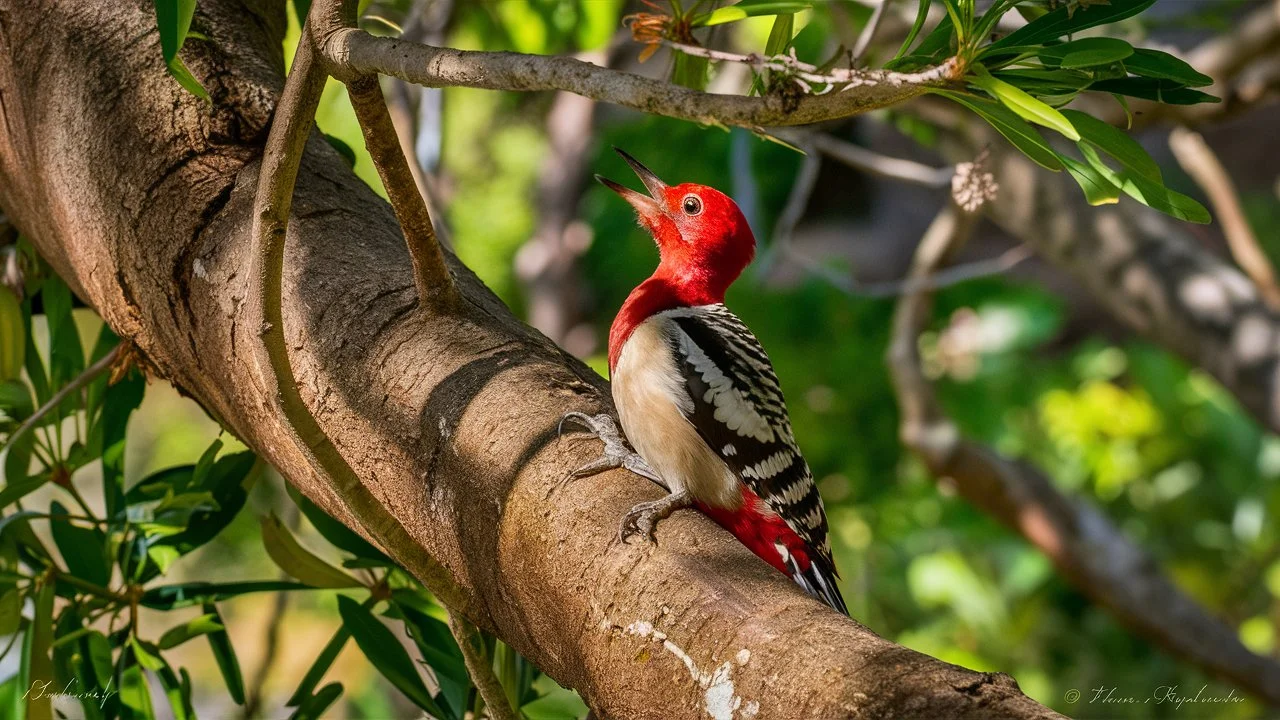
Physical Characteristics: The Red-headed Woodpecker is easily recognizable by its completely red head, neck, and throat. Its body is black and white, with a black back and large white patches on the wings. They measure about 9 inches in length.
Habitat: These woodpeckers are found in open woodlands, orchards, parks, and wooded suburbs across North America, especially in the eastern and central United States.
Behavior: Red-headed Woodpeckers are known for their acrobatic skills, often catching insects in flight. They have a varied diet, including insects, nuts, fruits, and seeds. They also cache food in tree crevices for later consumption.
Breeding: They nest in cavities, often in dead trees or branches. The female lays 4-7 eggs, and both parents share the incubation duties.
Interesting Facts: Red-headed Woodpeckers are one of the few woodpecker species that store food. They are also known to cover their caches with wood or bark pieces to hide them from other birds.
3. Northern Cardinal (Cardinalis cardinalis)

Physical Characteristics: Male Northern Cardinals are stunning with their bright red plumage, which includes their heads. Females are more subdued, with tan or brown feathers and a slight reddish hue on their wings and tail. They measure about 8-9 inches in length.
Habitat: These birds are common in gardens, woodlands, swamps, and shrublands throughout the eastern United States, extending into Mexico and Central America.
Behavior: Northern Cardinals are known for their loud, clear whistles. They are territorial birds, particularly during the breeding season. Their diet consists mainly of seeds, fruits, and insects.
Breeding: Cardinals build cup-shaped nests in dense shrubs or trees. The female lays 2-5 eggs, which she incubates for about two weeks.
Interesting Facts: The Northern Cardinal is the state bird of seven U.S. states, more than any other bird. Males are known to be very aggressive, often attacking their reflections in windows, mistaking them for intruding males.
4. Red-bellied Woodpecker (Melanerpes carolinus)
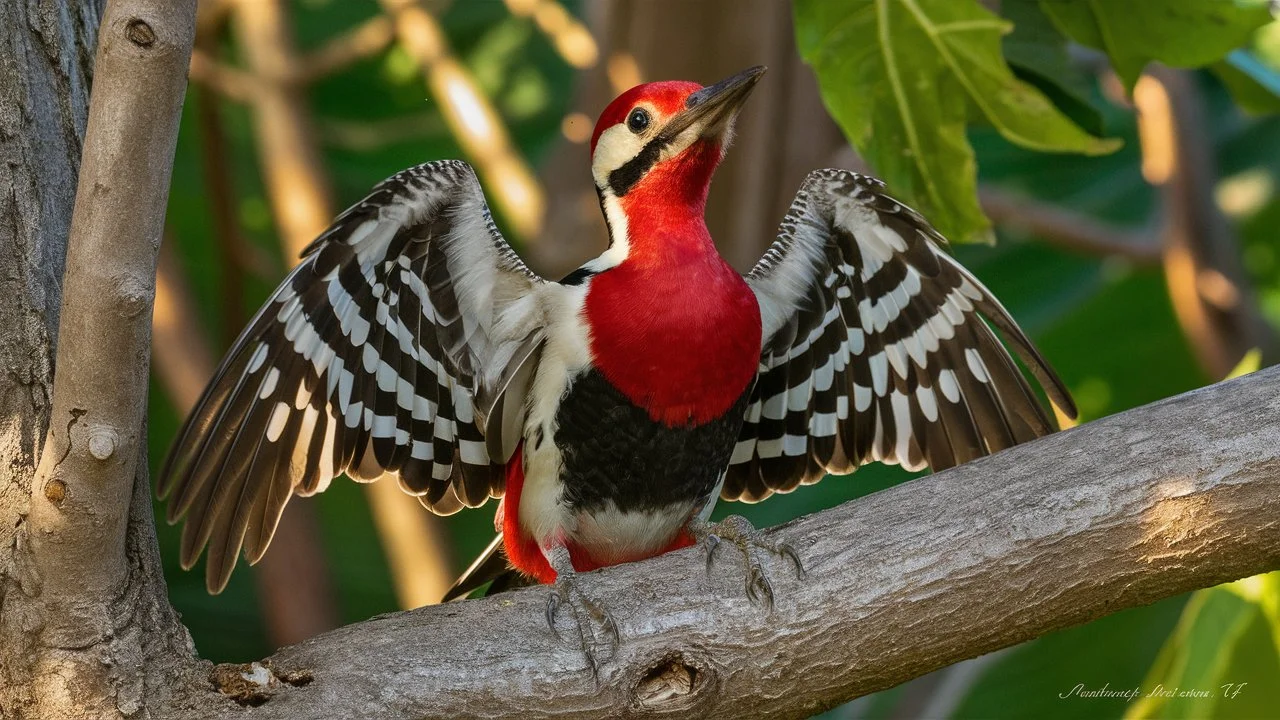
Physical Characteristics: Despite its name, the Red-bellied Woodpecker’s most striking feature is the red cap on its head. The belly has a faint reddish tinge, but it is often hard to see. These woodpeckers have black and white barred backs and pale undersides. They measure about 9-10 inches in length.
Habitat: Red-bellied Woodpeckers inhabit forests, woodlands, and suburban areas in the eastern United States. They are particularly fond of deciduous forests.
Behavior: They are adept climbers and often seen scaling tree trunks in search of insects. Their diet includes insects, fruits, nuts, and seeds. They have a distinctive rolling call.
Breeding: They nest in cavities in dead trees or large branches. The female lays 4-5 eggs, and both parents incubate the eggs and feed the young.
Interesting Facts: Red-bellied Woodpeckers have a strong beak that they use to drill into wood. They also have a long, sticky tongue to extract insects from crevices.
5. Crimson-collared Tanager (Ramphocelus sanguinolentus)

Physical Characteristics: The Crimson-collared Tanager is a striking bird with a bright red head, neck, and underparts, contrasting with its black back, wings, and tail. They measure about 7 inches in length.
Habitat: These tanagers are found in humid lowland forests and edges in Central America, particularly in countries like Costa Rica, Honduras, and Nicaragua.
Behavior: They are often seen in pairs or small groups, foraging for fruits, insects, and small invertebrates. They are known for their beautiful, melodious song.
Breeding: Crimson-collared Tanagers build cup-shaped nests in trees or shrubs. The female lays 2-3 eggs, and both parents participate in feeding the chicks.
Interesting Facts: These birds are known for their striking coloration, which is believed to play a role in mating and territorial displays.
6. Scarlet-headed Blackbird (Amblyramphus holosericeus)

Physical Characteristics: The Scarlet-headed Blackbird has a vibrant red head, throat, and upper chest, while the rest of its body is glossy black. They are about 8.5-9 inches in length.
Habitat: These birds are found in wetlands, marshes, and reed beds in South America, particularly in Argentina, Brazil, and Paraguay.
Behavior: Scarlet-headed Blackbirds are often seen perched on reeds or low vegetation. They feed on insects, seeds, and small aquatic creatures. Their call is a distinctive, sharp whistle.
Breeding: They build their nests in dense reeds or tall grasses. The female lays 3-4 eggs, and both parents are involved in caring for the young.
Interesting Facts: The vivid red coloration is a standout feature that helps in identifying these birds from a distance, especially in their wetland habitats.
7. Red-headed Trogon (Harpactes erythrocephalus)
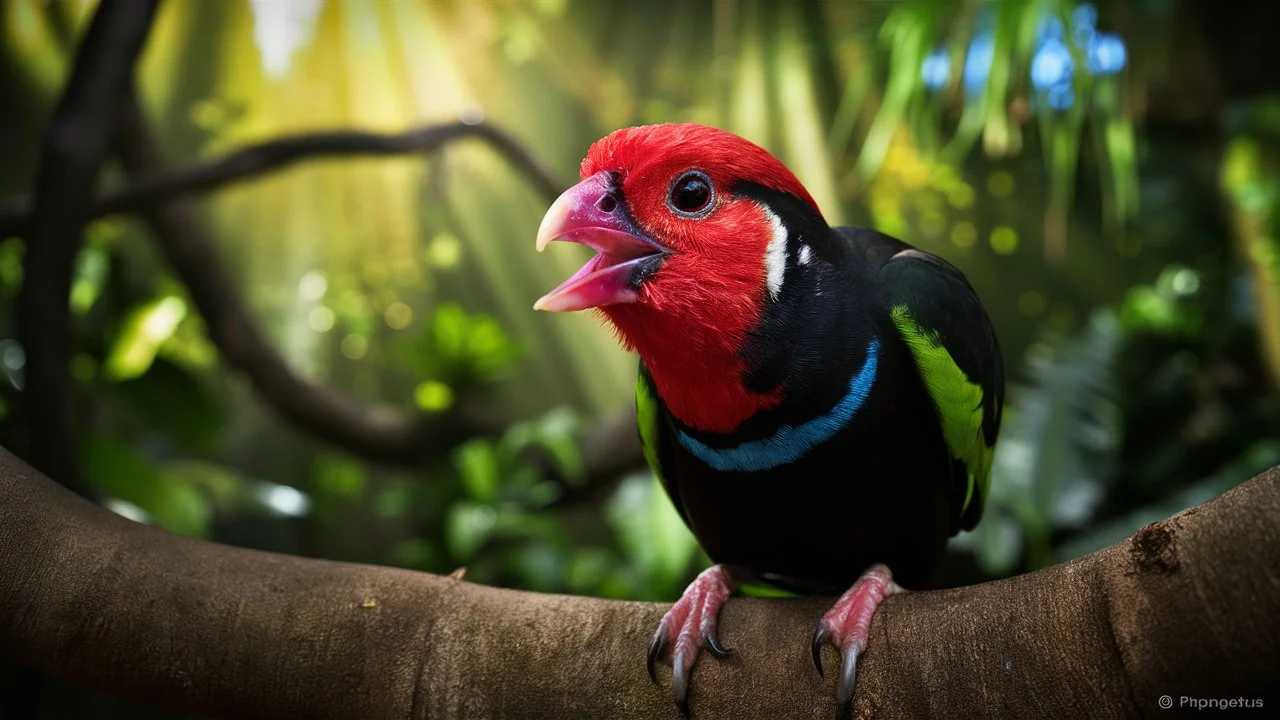
Physical Characteristics: The Red-headed Trogon has a bright red head, breast, and belly, with a contrasting brownish back and wings. Males and females have similar coloring, though females may be slightly duller. They measure about 13 inches in length.
Habitat: These trogons are found in forests and wooded areas across Southeast Asia, including countries like India, Thailand, and Malaysia.
Behavior: They are solitary or found in pairs, often sitting quietly in the forest understory. Their diet consists of insects and fruits. They have a soft, repetitive call.
Breeding: Red-headed Trogons nest in tree cavities or termite nests. The female lays 2-3 eggs, which both parents incubate.
Interesting Facts: Trogons have a distinctive sitting posture and are known for their stunning plumage, making them a favorite among birdwatchers.
8. Vermilion Flycatcher (Pyrocephalus rubinus)
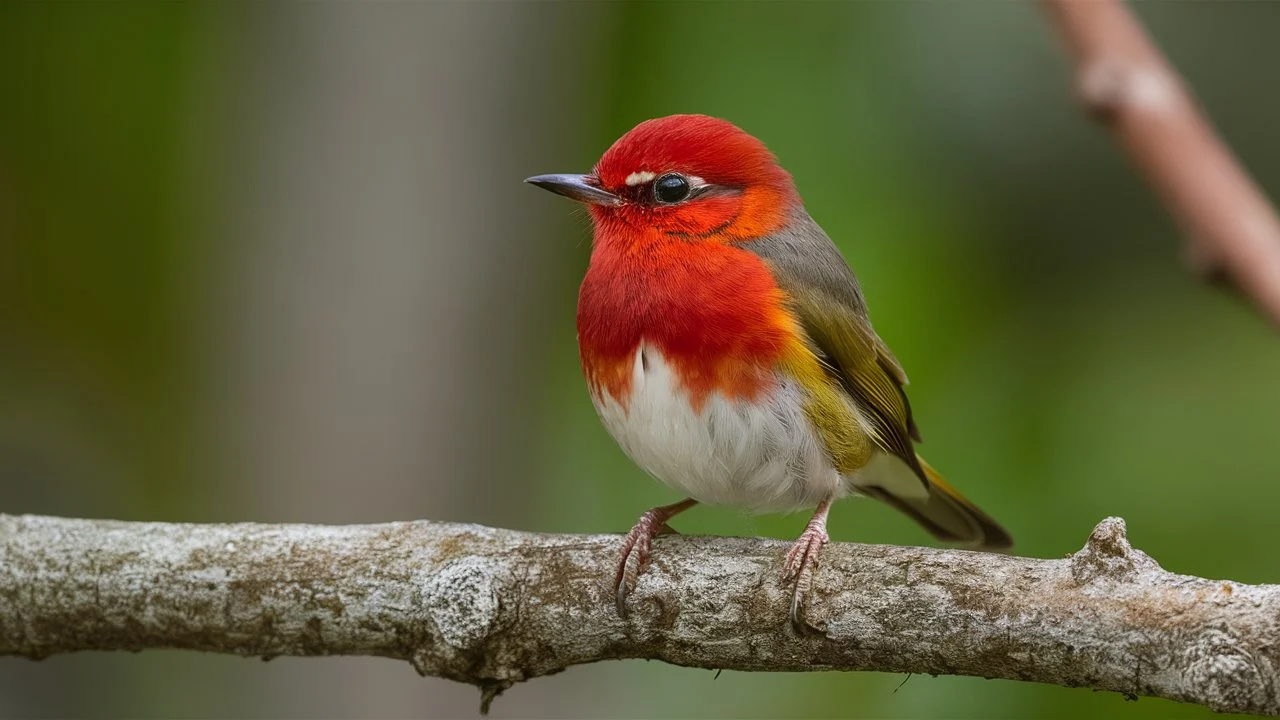
Physical Characteristics: Male Vermilion Flycatchers are striking with their brilliant red heads and underparts, contrasted by dark brown wings and back. Females are more subdued, with grayish-brown plumage and a peach-colored belly. They measure about 5-6 inches in length.
Habitat: These flycatchers are found in open woodlands, savannas, and scrublands across the southwestern United States, Central America, and parts of South America.
Behavior: Vermilion Flycatchers are agile fliers, often seen catching insects mid-air. They perch conspicuously, making them easy to spot. They also have a distinctive song.
Breeding: They build cup-shaped nests in trees or shrubs. The female lays 2-4 eggs, which she incubates while the male defends the territory.
Interesting Facts: The vivid red coloration of males is a result of carotenoid pigments in their diet, similar to the House Finch.
9. Crimson Rosella (Platycercus elegans)
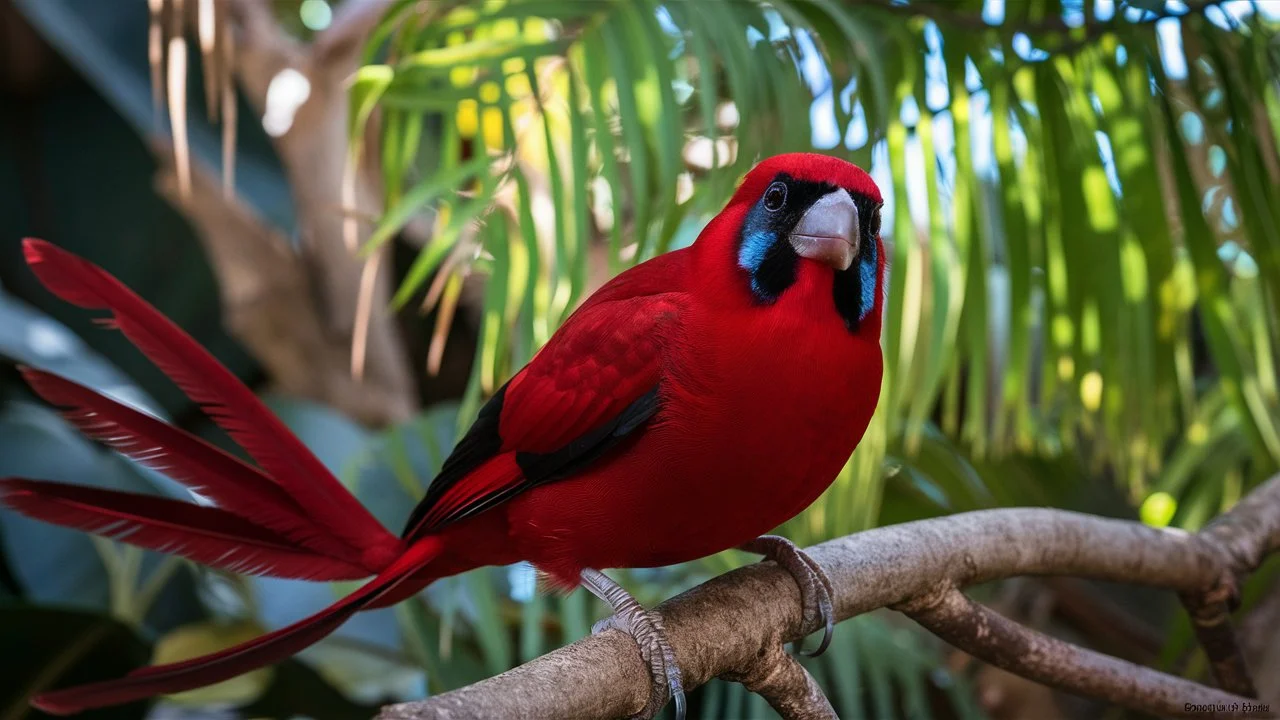
Physical Characteristics: The Crimson Rosella has a striking red head, neck, and breast, with a blue cheek patch and blue-black wings and back. They are medium-sized parrots, measuring about 14 inches in length.
Habitat: These parrots are found in forests, woodlands, and gardens in eastern and southeastern Australia.
Behavior: Crimson Rosellas are social birds, often seen in pairs or small flocks. They feed on seeds, fruits, nuts, and flowers. Their call is a series of melodic whistles.
Breeding: They nest in tree hollows, where the female lays 4-6 eggs. Both parents help feed the chicks once they hatch.
Interesting Facts: Crimson Rosellas are popular in aviculture due to their vibrant colors and friendly disposition. They are also known for their mimicry skills.
Conclusion
The diversity of brown birds with red heads is a testament to the rich variety in the avian world. Each of these nine species showcases unique adaptations and behaviors that make them fascinating subjects for birdwatchers and nature enthusiasts alike. Whether you spot a House Finch in your backyard or a Crimson Rosella in the Australian forests, these birds add a splash of color and a touch of wonder to our natural surroundings.
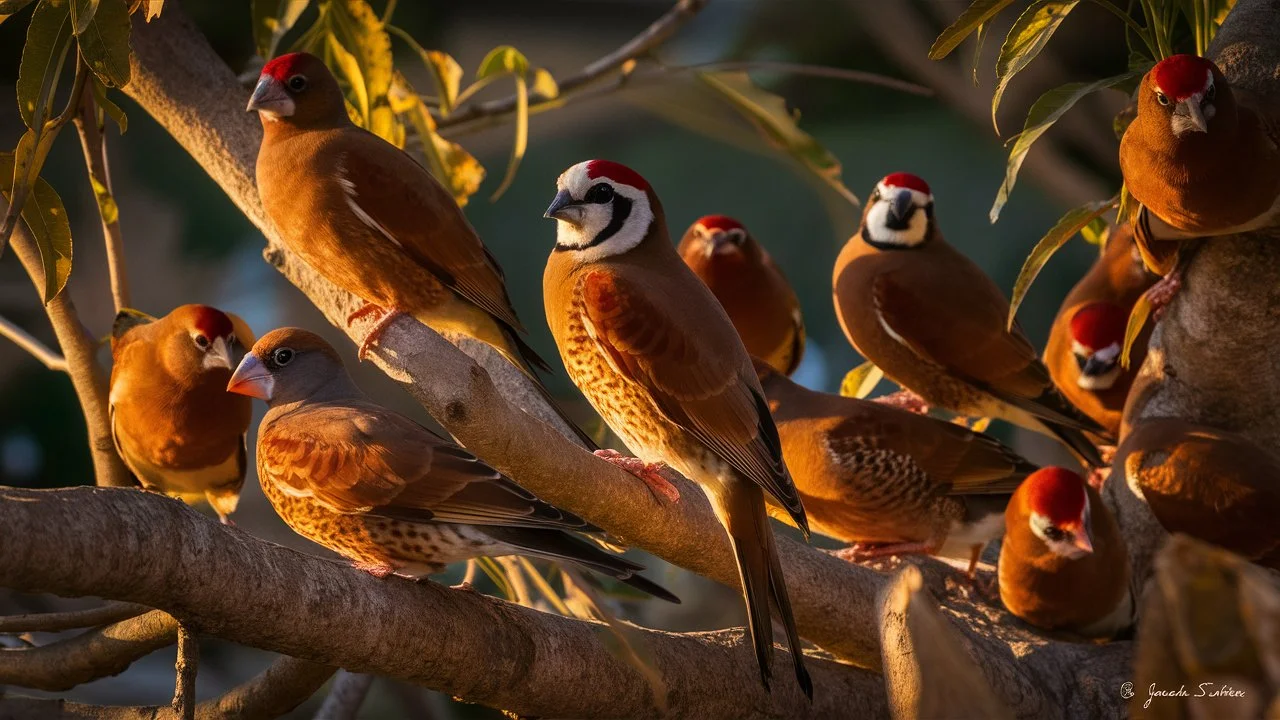
1 thought on “9 Brown Birds With Red Heads: Pictures & Detailed Guide”